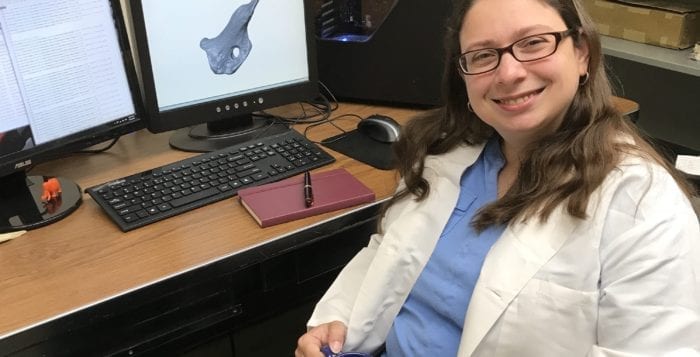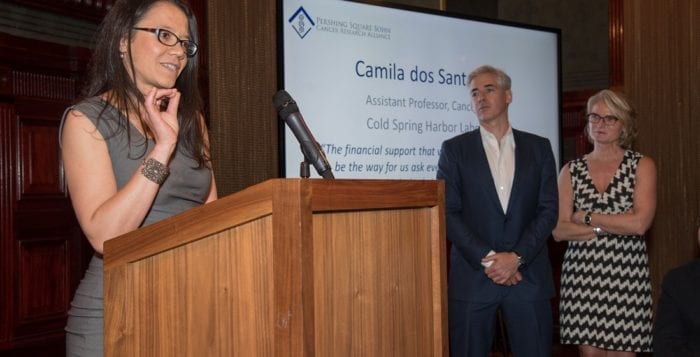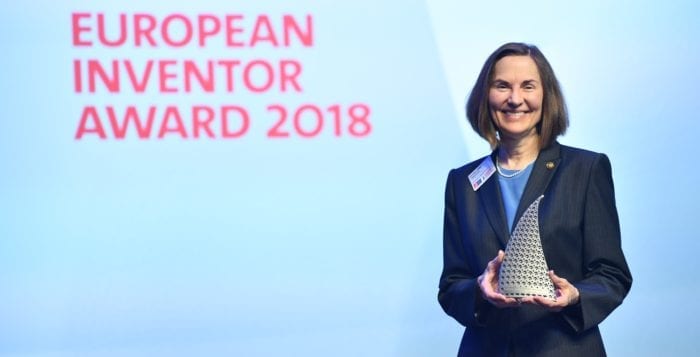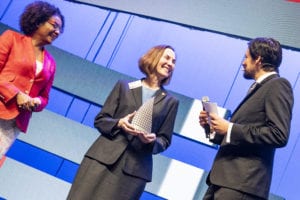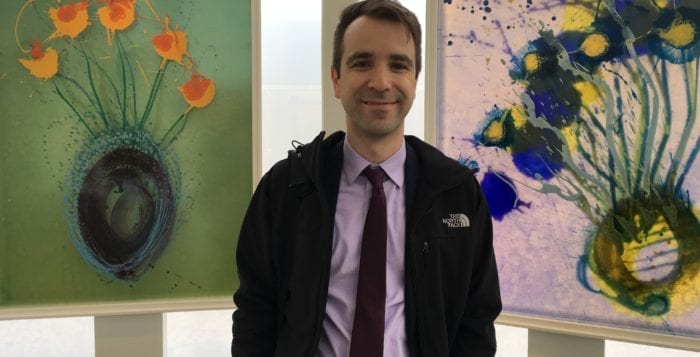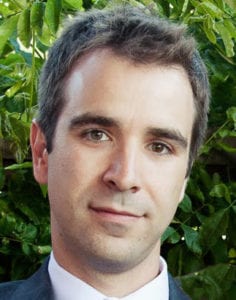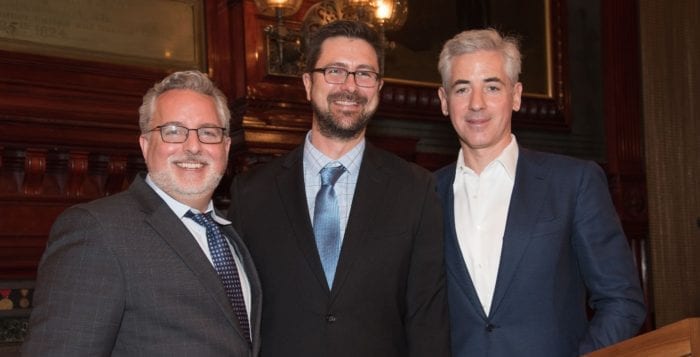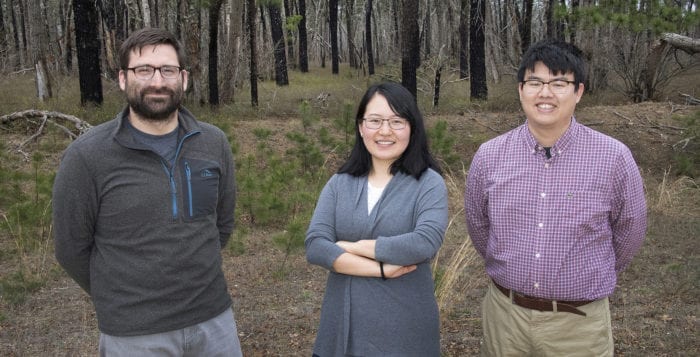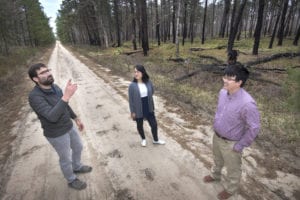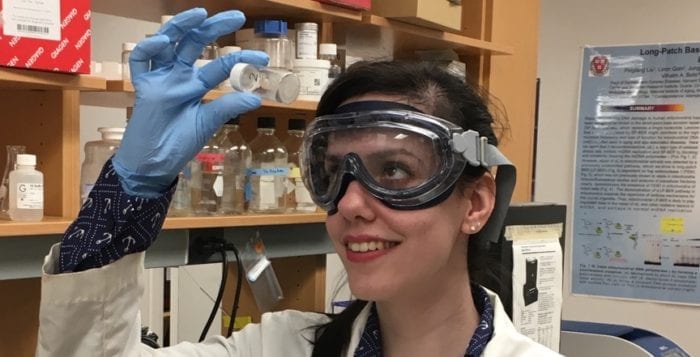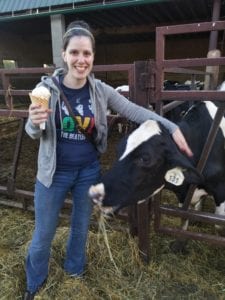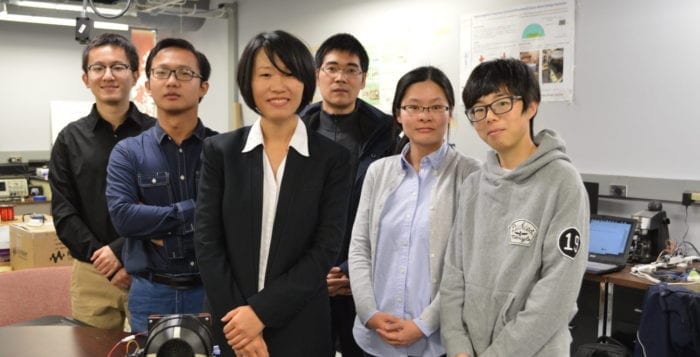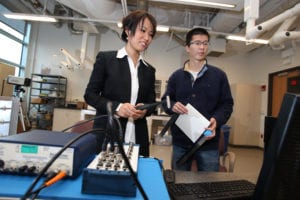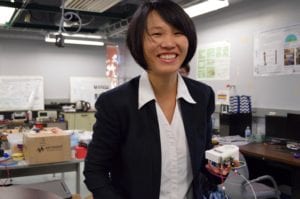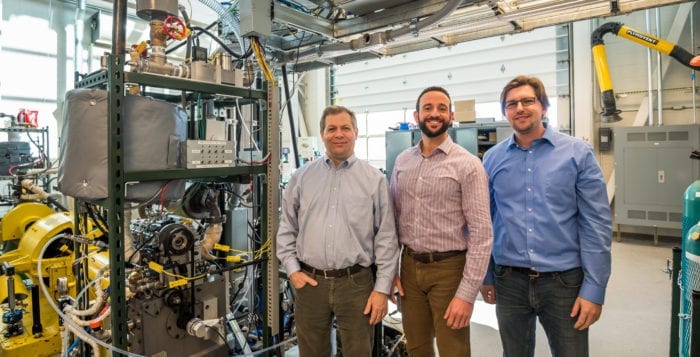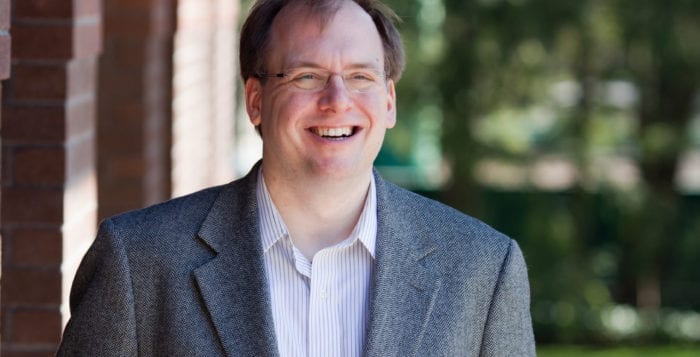By Daniel Dunaief
This one’s a head scratcher, literally.
For years, people assumed early primates — small creatures that lived 55 million years ago — had nails. That, however, is not the complete story, as Stony Brook University Assistant Professor Stephanie Maiolino and a team of researchers discovered.
In addition to nails, which lay flat on our fingers and which make it easy to scratch an itch after a mosquito bite, earlier primates had something called grooming claws. These claws, which were on the toes next to their big toes, allowed them to remove external parasites like ticks and lice, which likely helped them survive against an onslaught of various critters eager to steal, or even infect, some of their blood.
Maiolino, who is in the Department of Anatomical Sciences at SBU, teamed up with lead author Douglas Boyer, an associate professor in the Department of Evolutionary Anthropology at Duke University; Johnathan Bloch, the Florida Museum of Natural History curator of vertebrate paleontology at University of Florida; Patricia Holroyd, a senior museum scientist at UC-Berkeley’s Museum of Paleontology; and Paul Morse, from the Florida Museum of Natural History at the University of Florida at Gainesville to report their results recently in the Journal of Human Evolution.
“It was generally assumed that only a certain type of primate had grooming claws,” Maiolino said. “Finding these structures was quite surprising.”
Maiolino spent considerable time during her doctoral work, which she conducted at SBU prior to becoming an instructor at the university, analyzing the differences in the bones of species that have nails, claws and grooming claws. By understanding the anatomical features of the phalanges — or fingers and toes — leading up to the claws or nails, Maiolino was able to go back into the fossil record to explore the prevalence of these digit protrusions.
Oftentimes, she suggested, researchers collect a bone, or even a fragment of a bone, in which a nail or claw is almost never preserved in the fossil record. Maiolino used her analysis to extrapolate the parts that extend beyond the remaining fossils.
While nails sit on the end of fingers, grooming claws stick up, which puts them in an ideal position for combing through hair, which would allow the primates to remove pests that could compromise their health or threaten their survival.
“From a functional standpoint, it’s often overlooked how important the need to remove these parasites [is],” she said. When people see lemurs whose ears are completely covered in ticks or they hear about dogs that have so many ticks on them that the dog is at risk of dying, they recognize that “having an adaptation to help you remove them is actually surprisingly a big deal.”
Like any other adaptation, however, the development of these grooming digits comes with a cost. Instead of having that digit available for locomotion or grasping branches, it becomes more useful in removing unwanted insects. “There are significant pressures shaping the feet of these primates,” said Maiolino.
To provide some perspective on the importance of grooming claws, Maiolino highlighted how the primates from the fossil record were not much bigger than a mouse. Having less blood because they are smaller than current primates, and dealing with ticks that are closer to their size, suggests that the health consequences of an infestation are much greater.
As primates became more social — interacting with other members of their species and taking turns grooming each other — the pressure to have these grooming claws may have reduced.
Nonetheless, Maiolino said, a few primates that spend hours each day picking ticks off each other in a process called allogrooming still have these claws. “Some of the animals that do have [the claws] groom each other considerably,” she said, which suggests that there is still work to do to understand the evolution of these features.
When Maiolino and her collaborators first started exploring the claws versus nails discussion, they knew that researchers believed anthropoids didn’t have them.
“Now we know that anthropoids did,” she said. “We’re getting more of a sense of the distribution” of these claws.
From here, Maiolino would like to continue to explore the evolutionary trajectory from claw-bearing nonprimates to nail-bearing primates. There are a “lot of questions about why early primates ended up evolving nails in the first place,” she said.
William Jungers, a distinguished professor emeritus at Stony Brook University who was Maiolino’s doctoral thesis adviser, described her as “an outstanding and innovative young scientist with a very bright future as an educator and comparative anatomist.” He said Maiolino uses “cutting edge imaging methods to advance our understanding of primate origins and paleobiology, especially the evolution of unique aspects of primate hands and feet.”
Jungers explained that claws and nails are the “key features linked to both locomotion and social behavior.”
Maiolino, who currently lives in Port Jefferson, said when she visits zoos, she’s always on the lookout for the way primates and other mammals use their nails or claws. She also studies photographs and videos.
When she first started graduate school, Maiolino was much more interested in skulls than in nails. Once she linked nails and claws, however, to questions about primate origins, she became much more interested in them.
Outside of the lab, Maiolino said she enjoys watching horror movies. One of her favorites is the second “Aliens” film in the Signourney Weaver centered franchise. She is also a fountain pen enthusiast.
Back in high school in New Jersey, Maiolino was especially interested in studying evolution. Embryology and embryological development appealed to her, as she was amazed by how growth in the womb affected what organisms became.
As for her work, a Holy Grail question for her would be to better understand why primates developed nails in the first place. She’s trying to understand the interplay between body size, behavior and other variables that affected these structures.

